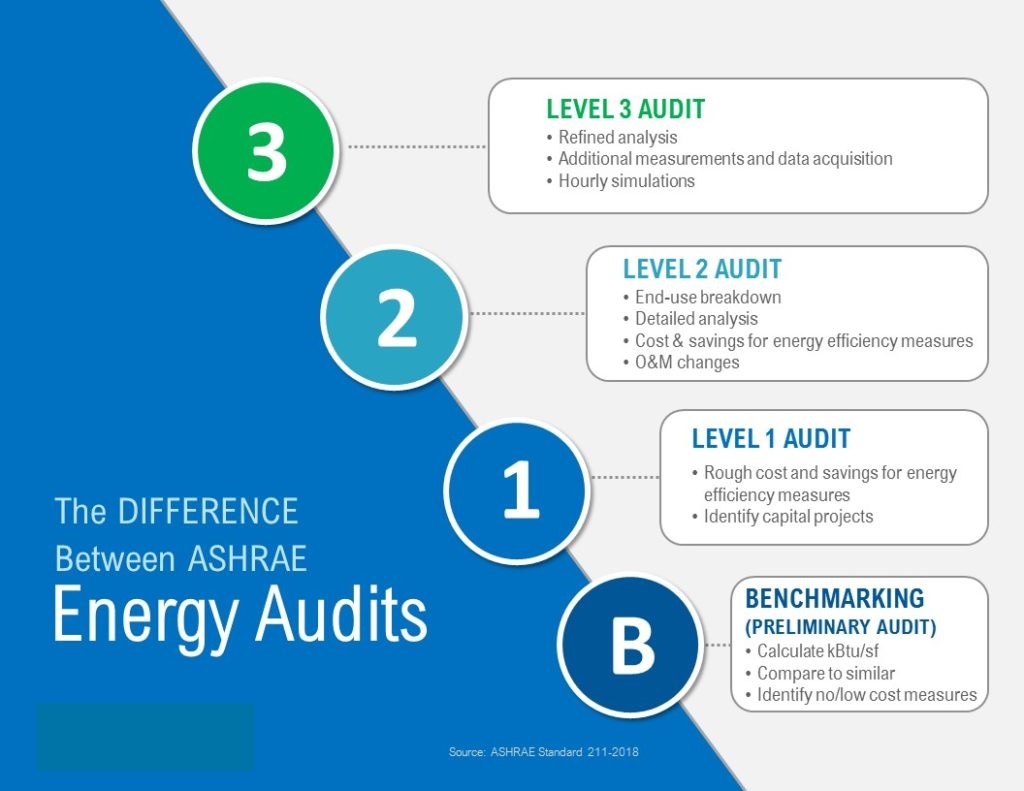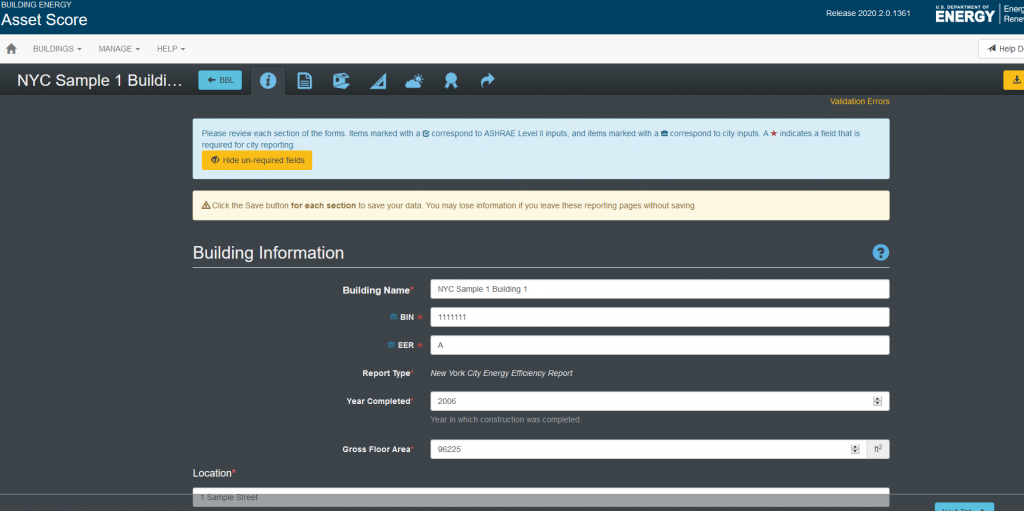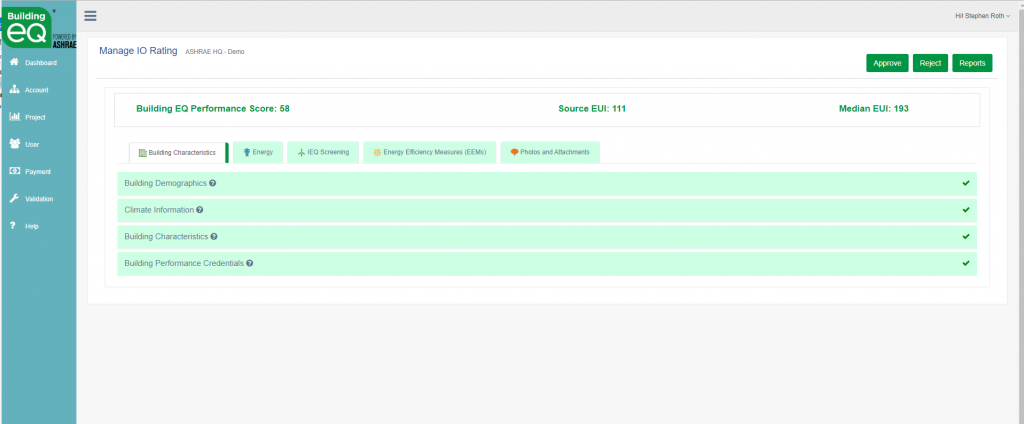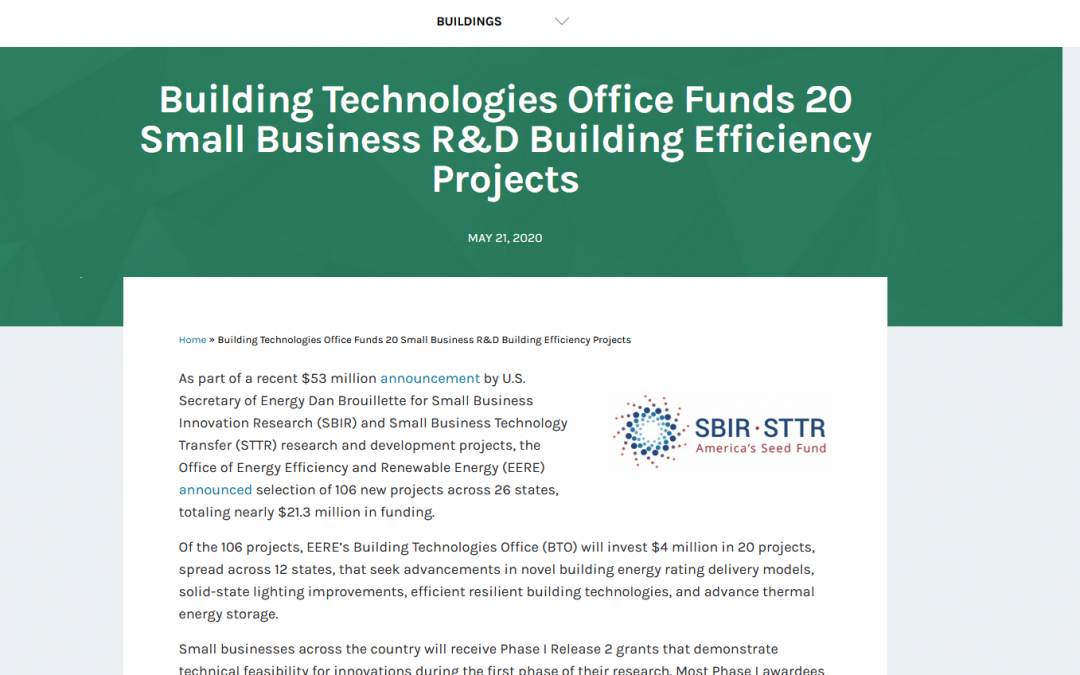Overview
Carmel Software has recently received funding from the U.S. Department of Energy’s Building Technology Office (BTO) to develop a software tool that helps disparate software tools in the building energy audit space to communicate with one another, all in the name of reducing building energy usage. Remember, buildings use 40% of all energy in the United States, so this is a HUGE problem to solve.
The BTO released a Funding Opportunity Announcement (FOA), or a request for proposal in government-speak, to expand the number of third-party software tools that can import data from DOE’s Asset Score Audit Template (https://buildingenergyscore.energy.gov/ ) and the accompanying data format that it supports: BuildingSync XML (https://buildingsync.net/ ).
Energy Audit
First, what is a building energy audit? The purpose of an energy audit is to determine where, when, why and how energy is used in a facility, and to identify opportunities to improve efficiency. Energy auditing services are offered by energy services companies, energy consultants and engineering firms. The energy auditor leads the audit process but works closely with building owners, staff and other key participants throughout to ensure accuracy of data collection and appropriateness of energy efficiency recommendation. The audit typically begins with a review of historical and current utility data and benchmarking of the building’s energy use against similar buildings. This sets the stage for an onsite inspection of the physical building. The main outcome of an energy audit is a list of recommended energy efficiency measures (EEMs), their associated energy savings potential, and an assessment of whether EEM installation costs are a good financial investment.
There are 3 levels of energy audits according to ASHRAE:

Level I: Site Assessment or Preliminary Audits identify no-cost and low-cost energy saving opportunities, and a general view of potential capital improvements. Activities include an assessment of energy bills and a brief site inspection of your building.
Level II: Energy Survey and Engineering Analysis Audits identify no-cost and low-cost opportunities, and also provide EEM recommendations in line with your financial plans and potential capital-intensive energy savings opportunities. Level II audits include an in-depth analysis of energy costs, energy usage and building characteristics and a more refined survey of how energy is used in your building.
Level III: Detailed Analysis of Capital-Intensive Modification Audits (sometimes referred to as an “investment grade” audit) provide solid recommendations and financial analysis for major capital investments. In addition to Level I and Level II activities, Level III audits include monitoring, data collection and engineering analysis.
Software Tools We are Working With
Let me explain what some of the tools we are working with:
Asset Score is a national standardized web-based software tool that can be used to assess the physical and structural energy efficiency and identify retrofit potentials of commercial buildings using whole-building simulation. The Audit Template tool is a subset of Asset Score and is used to create a standard building energy audit report and submit to selected jurisdictions to comply with local ordinances, such as New York City’s LL87 or San Francisco’s BRICK.

BuildingSync® is a common XML schema for energy audit data that can be utilized by different software and databases involved in the energy audit process. It allows data to be more easily aggregated, compared, and exchanged between different databases and software tools. This streamlines the energy audit process, improving the value of the data, minimizing duplication of effort for subsequent audits, and facilitating achievement of greater energy efficiency. BuildingSync can be exported from Audit Template so all information in an Audit Template project can be used externally by another software tool.
BuildingSync was developed to address the lack of an industry-standard collection format for energy audit data. Standardizing energy audit data can help energy auditors, software providers, building owners, utilities, and other entities by maximizing the value that can be obtained from each set of data – value obtained through collaboration, comparison, and reuse.

ASHRAE Building EQ (see blog post here about ASHRAE Building EQ) is a web-based portal that provides a quick energy analysis that benchmarks a building’s energy performance. Building EQ assists in the preparation of an ASHRAE Level 1 Energy Audit to identify means to improve a building’s energy performance including low-cost, no-cost energy efficiency measures and an Indoor Environmental Quality (IEQ) survey with recorded measurements to provide additional information to assess a building’s performance.

The Problem and Solution
Currently, the number of software tools that import Asset Score Audit Template data and BuildingSync is limited. The whole purpose of Asset Score Audit Template is to store energy efficiency data about a commercial building. However, this data is useless if it cannot easily be consumed by other related software tools that can perform building energy benchmark tests, building energy modeling, and other types of building analysis. The term used to describe how one software tool communicates with another is: interoperability.
Unfortunately, developing interoperability integration tools in existing building analysis software is a tedious and time-consuming process. Therefore, it discourages software developers from creating functionality such as those that import BuildingSync.
For Phase I of this DOE SBIR project, we proposed developing a web-based software tool (called Schema Server) that will completely streamline the flow of information from Asset Score Audit Template into third-party software tools such as ASHRAE Building EQ, so that all the user has to do is press one button on the producing or consuming software tool, and the software will perform quick data checks and validation and then seamlessly transfer data to the consuming tool, thereby eliminating the user having to manual enter the data. Phase I will focus solely on the workflow from Asset Score Audit Template to ASHRAE Building EQ. Once it is proven that this workflow can be streamlined, future phases will focus on other software tools. Phase I will also focus on making it easier for a third-party software developer to program BuildingSync import functionality into their building analysis software tool.
Benefits
Designing energy efficient buildings is of utmost importance today due to a wide variety of factors including limited fossil fuel resources, pollution, global climate change, federal and state laws, high energy costs, and a host of other reasons. Buildings use 40% of all energy and a whopping 75% of electricity. If society is going to rely less on fossil fuels, we need to design more energy efficient buildings for both new and existing construction. The first step in designing more energy efficient buildings occurs during the initial design phase which involves running building energy simulation and analysis software that will predict yearly building energy usage. Improving the interoperability workflows discussed above will benefit the following stakeholders:
- Energy modelers: Give them more incentive to use various software tools to design energy efficient buildings since it will be an easier and more seamless process to enter the same data in more than one BIM authoring and building analysis or benchmarking software tool.
- Software developers: Gives them more incentive to integrate interoperability functionality into their tools if there is an easier and less expensive way to do it.
- Building owners: By designing more energy efficient buildings, it will save building owners a significant amount of money in utility and energy costs over the lifetime of the building.
- Society as a whole: Whatever people’s political beliefs, there is no arguing that our fossil fuel supplies are finite, we are polluting the earth, and adverse climate changes are occurring all over the world including in our own backyard of California with unprecedented wildfires. Designing energy efficient buildings is just one step toward reducing our reliance of fossil fuels and cleaning the air for future generations.

